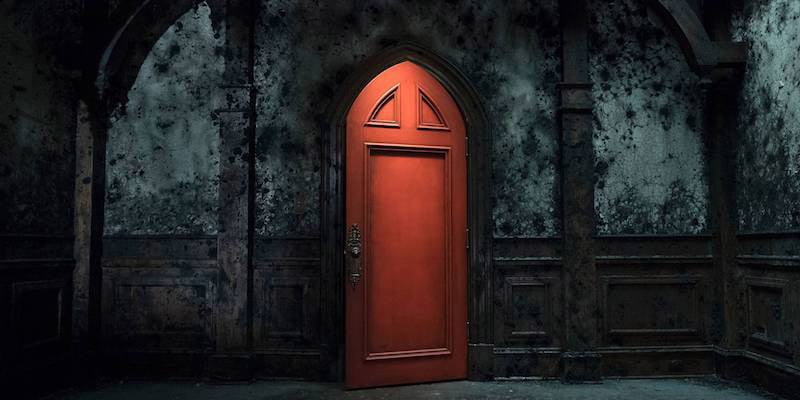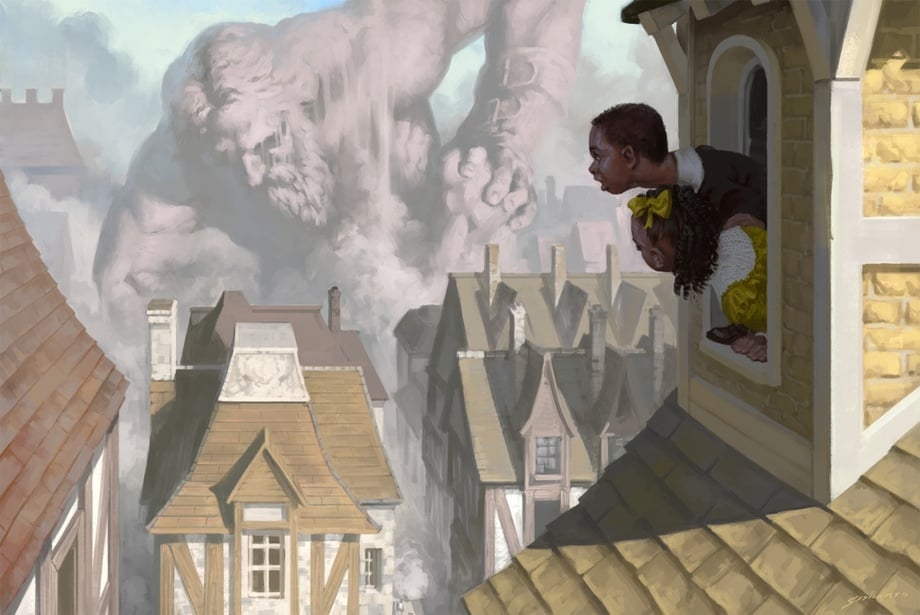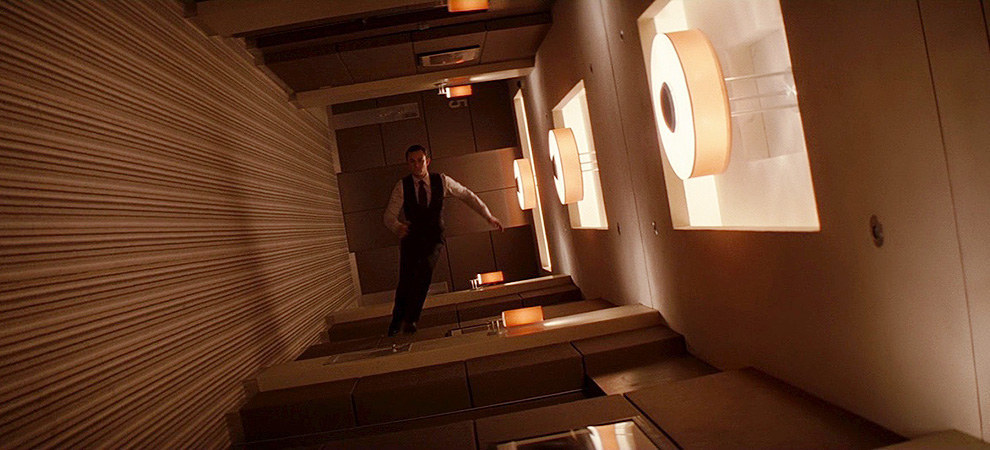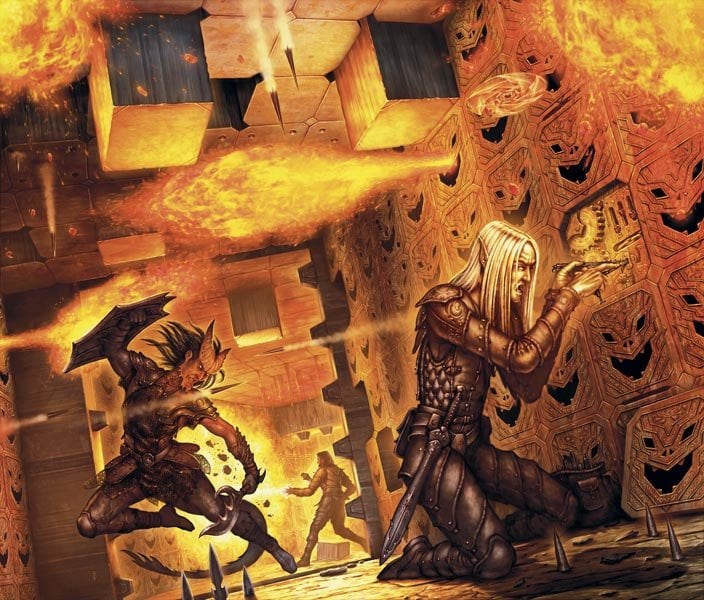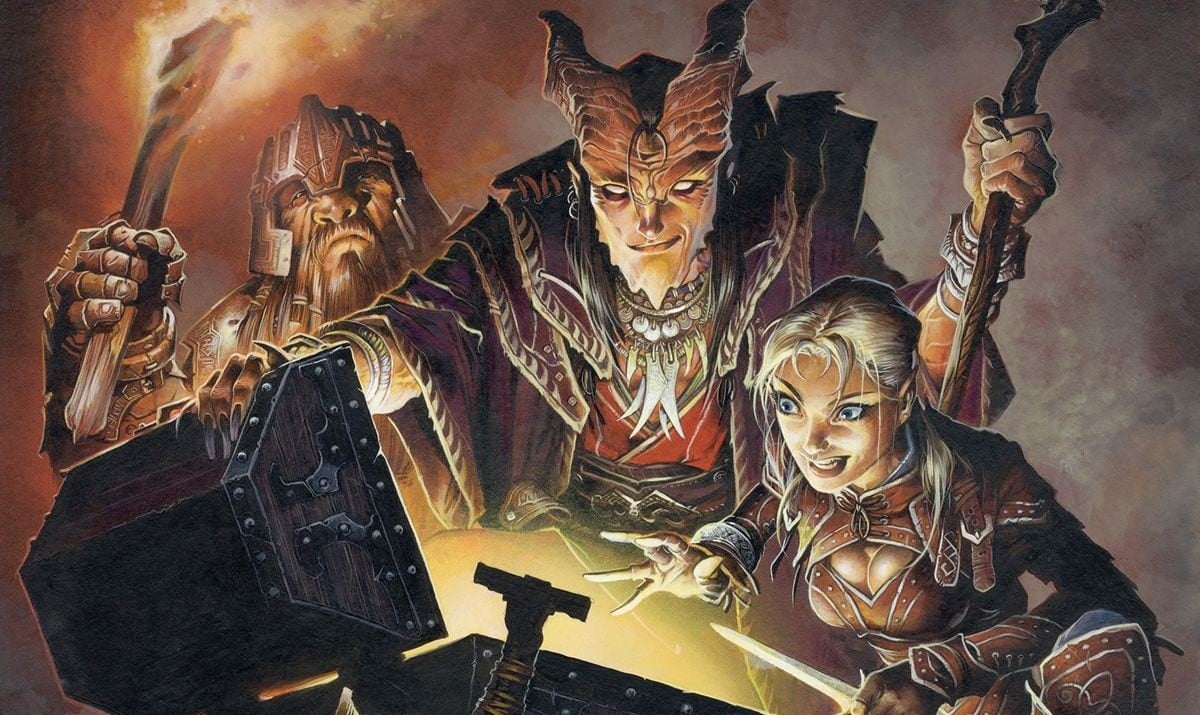D&D: Five Mysteries to Get Players Thinking
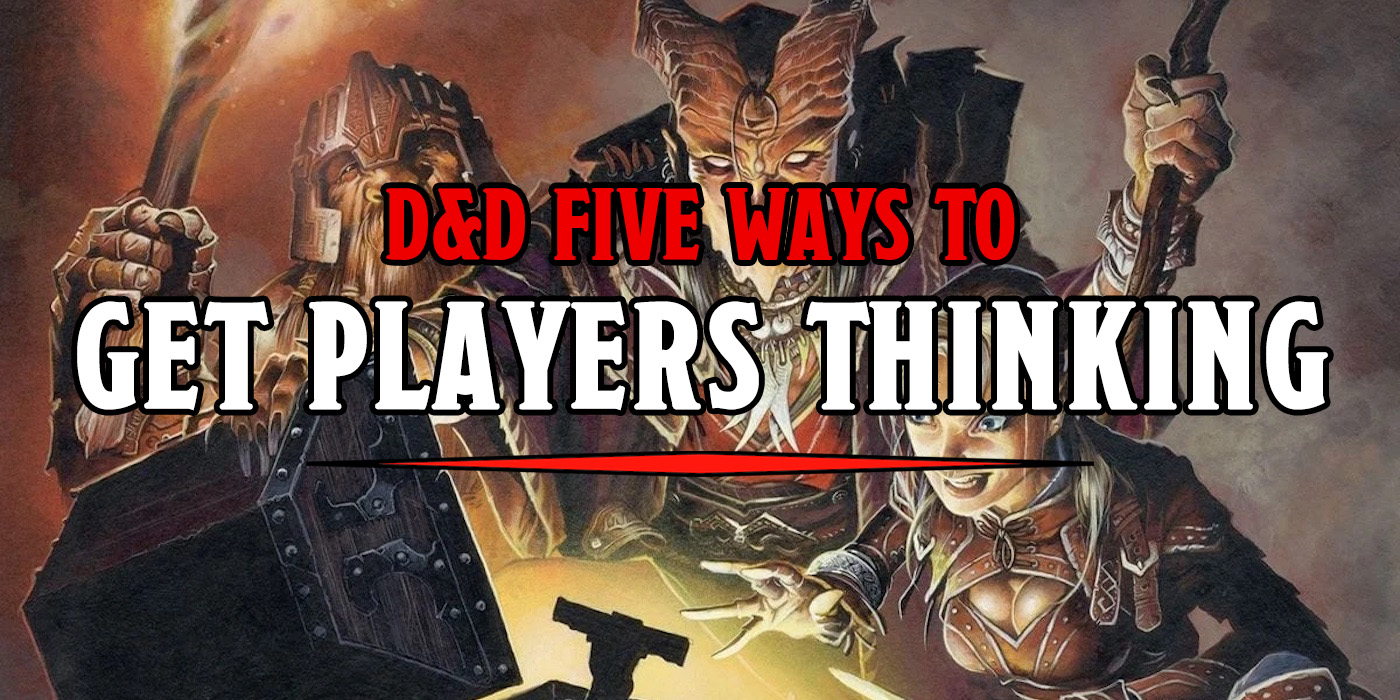
Who says D&D PCs are incapable of stringing two thoughts together? Just use one of these five tricks and they’ll think up a storm.
Everyone knows that the heart of D&D is spending 3 hours thinking of a plan and 25 minutes doing not the plan. Step two is pretty easy. But what do you do when you need to spend 3 hours thinking?
Don’t worry, we’re here to help with five ways guaranteed to get any party thinking.
A Closed Door
Step one: put a door in front of where they want to go. When they say they open it, ask how. Or offer up even a little bit of resistance. Maybe the door is locked, or better yet, it has no visible lock. Make it a weird color that stands out from everything else. Give a little bit of feedback, like the sound of running water on the other side, or spooky smoke emanating out from underneath the crack, and there’s no end to figuring out what might be on the other side.
A Spooky Statue
Need to amp up the tension and draw out your session a bit? Put a spooky statue in a room. It doesn’t have to do anything, but the more expectant it looks, the more players will latch on to the idea that it does something. Does the statue have an empty outstretched hand? That’s just begging someone to put a sword in it. Does it look angry or have jewel eyes? They could shoot lasers.
Either way, all you have to do is listen for what sounds like a good fit when they come up with a plan.
A Branching Path
If you need to grind the momentum of your session to a halt? Maybe you need to get up to get the door because the pizza arrived. Or maybe you have to roll up some random encounters real quick – then have a hallway come to a branching path. It can end in a corridor that lets them go left or right, which is enough to petrify any table. But you could have a corridor come to a hub room with doors leading off in many different directions.
Then you combine the closed door and the branching pathway. Guaranteed to buy you enough time to order a pizza.
An Obvious Trap
Sometimes all you have to do is “show the barrel of the gun” a little bit to get the players thinking. This is when you show something like “a big boulder perched on a ramp” or “a big pit with spikes in it.” There are a lot of ways this can go.
But whether it’s scything blades or crushing walls, let players know what the danger ahead of them is, and they’ll try and figure out how to keep from suffering it.
Chest in a Hard to Reach Place
Put a treasure chest in a weird location. It could be on a floating platform, high atop a pillar, in a random cave that seems inaccessible otherwise. But nothing will get the ol’ brain juices flowing quite like the idea that “there’s a thing here that you don’t immediately know how to get to.” Because you can’t move on until you figure out how to get the thing!
What do you do when you need to stall for time?

